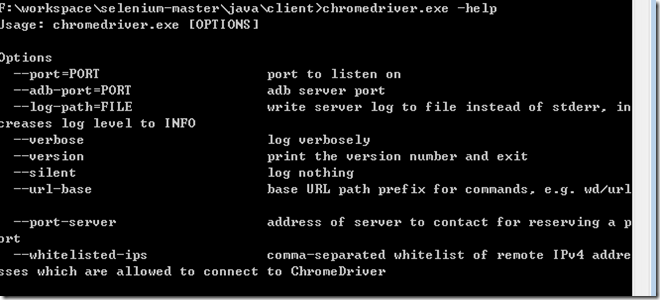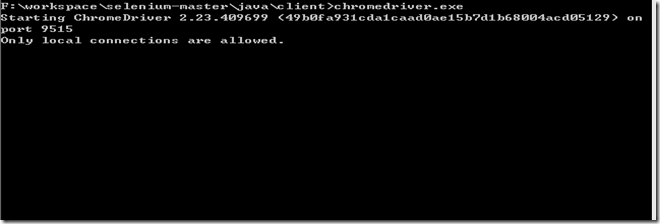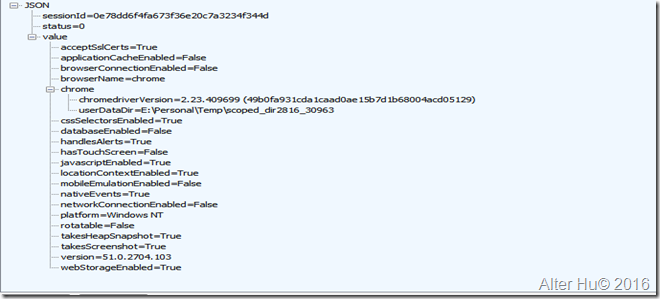Selenium3 有哪些变化?
其实相对于与Selenium2,Selenium3没有做太多的改动。下面给出官方的文档说明,供参考。
参考文档:https://seleniumhq.wordpress.com/2013/08/28/the-road-to-selenium-3/
- “We aim for Selenium 3 to be “a tool for user-focused automation of mobile and web apps”,Developers from projects such as Appium, ios-driver and selendroidwill be working on the suite of tests to enable this.”
- “Selenium 3 will see the removal of the original Selenium Core implementations, and consequently we’ll be deprecating the RC APIs too,the original implementation will be available as a download, but it will no longer be actively developed once we release 3.0.”
所以对于Selenium3来说最大的变动可能就是更加专注于手机和web的测试,尤其是手机的支持,因为你晓得的,现在更多的是移动的时代。
对于Selenium2中对于RemotControl的实现我看了下Selenium3的源码发现确实不在支持,而更多的转向了W3C standard,不是独成一套Selenium自己的WebDriver API.关于这个需要插如一下有关W3C WebDriver的知识。
有关W3C WebDriver
参考文档: https://www.w3.org/TR/webdriver/,https://www.w3.org/testing/Activity,https://github.com/w3c/webdriver
W3C组织制定了一套浏览器自动化的规范叫做WebDriver,这套规范规定了所有的浏览器生产商都必须遵守这个规范。其实定义了好多的遵循的接口和WebDriver的概念。对于Chrome,Firefox,Opera,Safari.etc他们都需要遵守这个规范并且实现规范里面的接口,这些实现一般都是伴随浏览器的开发进行的。
所以你应该明白了,Selenium不管是WebDriver还是RemoteWebDriver都是W3C WebDriver的一种实现而已。真正的核心浏览器的交互在对应的浏览器的WebDriver上,其实你有了对应的浏览器的WebDriver,参考W3C的标准接口文档HTTP-based wire protocol你就可以单独实现浏览器的操作。就是Client-Server的沟通。所有支持的命令列表如下:
举个ChromeDriver的例子。。。
- 首先我们找到ChromeDriver ,这个自然到chromium项目上去下载就好了。
https://sites.google.com/a/chromium.org/chromedriver/这里也有很多详细的接口的说明,这里的接口说明跟上面的W3C的接口说明差不多。你需要针对不同的浏览器下载对应的版本。下面我以下载的一个win版本的为例(下载地址:http://chromedriver.storage.googleapis.com/2.23/chromedriver_win32.zip )
WebDriver的使用
1.1 查看下chromedriver.exe提供给我们的一些可用的命令。
里面的使用很详细,这里我们只需要使用一个参数来启动ChromeDriver的server, –port ,命令如下:chromedriver.exe –port 9514,或者直接不输入端口直接回车,界面命令如下:
启动后chromedriver会在本地的9514端口号上进行监听通信,根据不同的命令发送到浏览器上,浏览器进行交互。比如启动一个chrome浏览器对应的命令是session,单独的ChromeDriver的HTTP通信URI是:http://localhost:9514/session,对于通过RemoteWebDriver的URL是:http://localhost:9514/wd/hub/session
WebDriver -New Session
看一下这个说明: https://www.w3.org/TR/webdriver/#dfn-new-session,操作流程如下:
The remote end steps are:
-
If the remote end is an intermediary node, take implementation-defined steps that either result in returning an error with error code session not created, or in returning a success with data that is isomorphic to that returned by remote ends according to the rest of this algorithm.
-
If the maximum active sessions is equal to the length of the list of active sessions, return error with error code session not created.
-
If there is a current user prompt, return error with error code session not created.
-
Let capabilities be the result of getting a property named "
capabilities" from the parameters argument. -
Let capabilities result be the result of processing capabilities with capabilities as an argument.
-
If capabilities result is an error, return error with error code session not created.
-
Let capabilities be capabilities result’s data.
-
Let session id be the result of generating a UUID.
-
Let session be a new session with the session ID of session id.
-
Set the current session to session.
-
Append session to active sessions.
上面的流程已经在最新的Selenium WebDriver中实现了。所有启动一个浏览器做的session操作可以参考如下核心Selenium代码逻辑。
1. 第一步设置chromeDriver的路径后面代码用到:System.setProperty("webdriver.chrome.driver", "chromedriver.exe");
2. 第二步构建一个命令行对象用于执行chromedriver.exe的命令:
org.openqa.selenium.remote.service.DriverService.Builder.build()
public DS build() {
if (port == 0) {
port = PortProber.findFreePort(); //可用的端口号,例如232323,那么后面用到的命令就是:chromedriver.exe –port 232323
}
if (exe == null) {
exe = findDefaultExecutable();
}
ImmutableList<String> args = createArgs();
return createDriverService(exe, port, args, environment);
}
1. 核心selenium命令执行类:org.openqa.selenium.remote.RemoteWebDriver.RemoteWebDriver(CommandExecutor, Capabilities, Capabilities)
public RemoteWebDriver(CommandExecutor executor, Capabilities desiredCapabilities,
Capabilities requiredCapabilities) {
this.executor = executor;
init(desiredCapabilities, requiredCapabilities);
if (executor instanceof NeedsLocalLogs) {
((NeedsLocalLogs)executor).setLocalLogs(localLogs);
}
try {
startClient(desiredCapabilities, requiredCapabilities);
} catch (RuntimeException e) {
try {
stopClient(desiredCapabilities, requiredCapabilities);
} catch (Exception ignored) {
// Ignore the clean-up exception. We'll propagate the original failure.
}
throw e;
}
try {
startSession(desiredCapabilities, requiredCapabilities);
} catch (RuntimeException e) {
try {
quit();
} catch (Exception ignored) {
// Ignore the clean-up exception. We'll propagate the original failure.
}
throw e;
}
}
以上的代码完成了如下的操作:
1. 初始化desiredCapabilities对象,这是发送到客户端的JSON 数据,
2. 启动一个session,这里包含一个判断,如果这是一个NEW_SESSION,那么会在上面构建的chromedriver上启动chromedriver然后在发送session命令。后台操作HTTP请求用到的是Apache HttpClient的API.
上面说明下WebDriver的通信是HTTP的协议,因此这里所有的通信都是通过JSON Wired进行沟通的RESTFul格式。也就是说所有的沟通都是一次RESTFul的request和response的过程。
参考如下Selenium的说明: https://github.com/SeleniumHQ/selenium/wiki/JsonWireProtocol#command-summary
JSON Request:
JSON Response:



